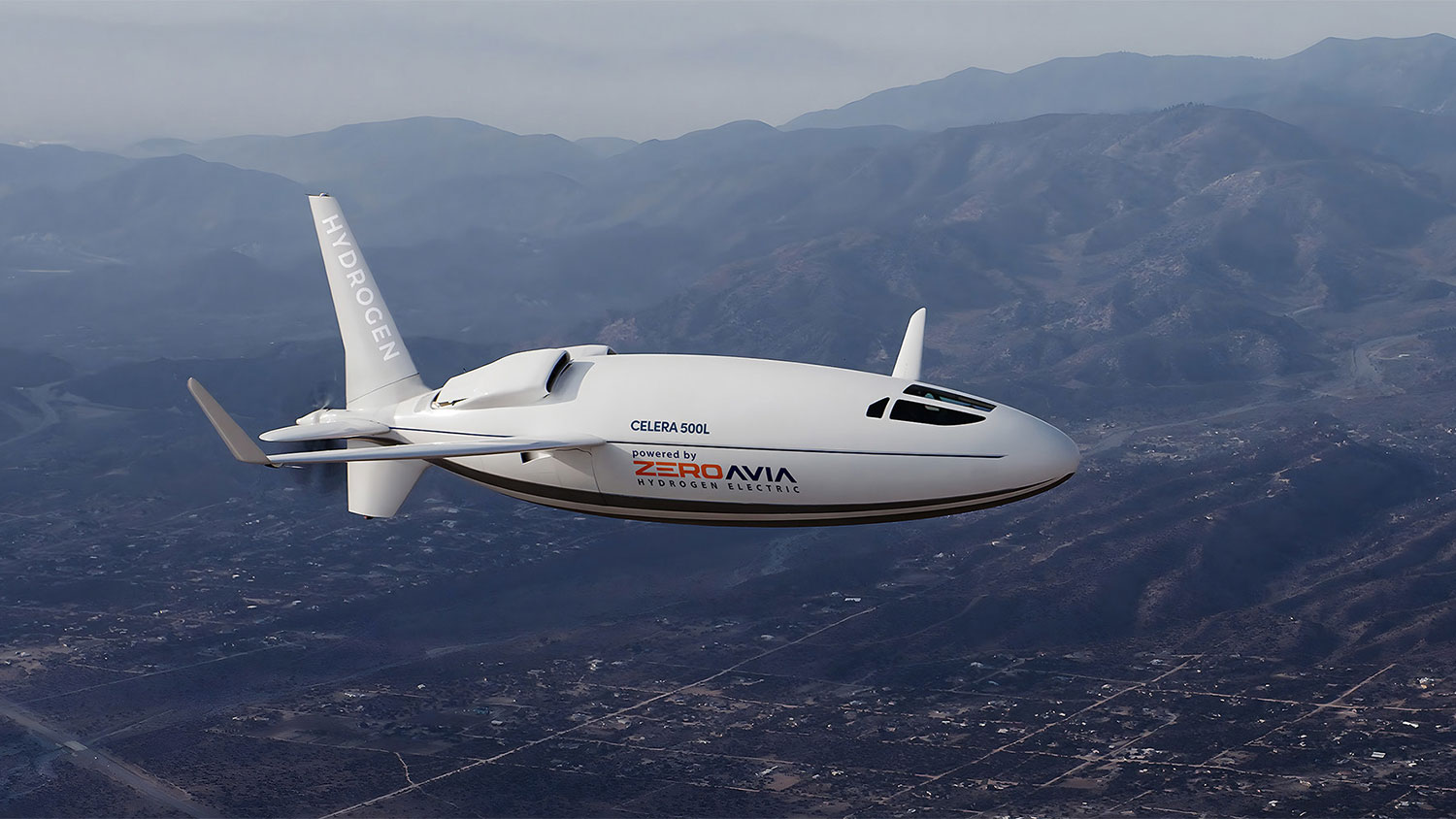
Leading zero-emission aviation pioneer ZeroAvia has teamed up with Otto Aviation to develop a hydrogen-electric powertrain to power Otto’s Celera 500L aircraft. Under the agreement, the two companies will work to integrate ZeroAvia’s ZA600 zero-emission engines into Otto’s revolutionary Celera aircraft.
The Celera is a highly innovative new model of transcontinental aircraft, scalable to 19 passengers, that significantly improves the efficiency of flight and reduces the operational costs of flying as a result.
Otto’s advanced aircraft design offers exceptionally low drag across the entire aircraft. The design of the Celera fuselage, empennage, and wings take advantage of laminar flow. Laminar flow is the minimum drag solution for aircraft surfaces and features smooth layers of airflow with little to no mixing of adjacent layers. When coupled with highly fuel-efficient propulsion systems, the Celera will significantly reduce operating costs and increase range relative to comparable aircraft while creating optimal passenger comfort and cargo capacity.
When powered by ZeroAvia’s powertrain, the Celera will offer long-range zero-emission flights while further reducing operating costs, thanks to reduced maintenance costs and falling hydrogen-fuel prices. The Celera design is highly conducive to accommodating large volumes of hydrogen within the fuselage that will enable 1,000 nautical miles of range – all with zero climate impact from carbon and non-carbon emissions.
Otto Aviation has built a full-scale prototype, and by mid-November 2021, the company announced it had completed some 55 successful test flights, reaching speeds over 250 mph (400 km/h) and altitudes up to 15,000 ft. This should eventually culminate in flights with cruising speeds of up to 460 mph (750 km/h).
The groundbreaking Celera aircraft, a flight-tested full-scale aircraft, has already delivered fuel and emission reductions of 80% less than comparable aircraft. It is clear that an 80% reduction in the use of fossil fuels is an environmental victory in itself. But they want to go one step further since instead of kerosene, it will use an electric propulsion system with a hydrogen fuel cell.
The development of this 600kW powertrain is part of Project HyFlyer II and will deliver a fully certified powertrain for aircraft of up to 19-seats by 2024. After having flown multiple 6-seat R&D prototypes, ZeroAvia is preparing its first 19-seat prototype for its inaugural flight in the coming weeks. The company is also retrofitting a second Dornier-228 testbed in Hollister, California, to conduct further flight testing.
Otto’s ultra-efficient passenger aircraft gets hydrogen powertrain
Source: Global Access News

No comments:
Post a Comment